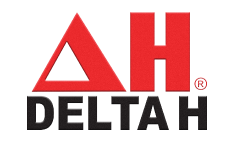- Optimized throughout
- Minimized downtime
- Enhanced equipment safety
- N.I.S.T. traceable certifications
- Qualified, guaranteed service
- Priority service response
- Calibration Services for temperature controllers traceable to N.I.S.T
- Temperature Uniformity Surveys and temperature balancing with extensive experience in aerospace pyrometry and compliance to meet requirements of AMS2750G previously known as AMS2750E, Boeing 5621, and others.
- Combustion system tuning, troubleshooting, and servicing. Emissions testing for NOx, CO, and Oxygen with precision air/fuel ratio adjustment by flue gas analysis.
- Problem solving and maintenance services, safety inspections, for all makes and models of industrial furnaces, kilns, and ovens, both gas and electric
Technical Mysteries with Thermal Processing:
Test your analytical skills with an actual recent project. Check this web page periodically for new challenges!
- Initial Problem Description
- Analysis and Observations
- What was the Problem?
- Formal Problem Statement
- Selected Feasible Alternative for Repair
The client produces over 30 million small propane cylinders per year. Occasionally the cylinders fail a pressure check or have clogged valves and, upon inspection, a “cobweb like” material is observed inside. This problem has been known for nearly 40 years and has become more prominent to a level that it must be addressed.
The following was observed upon inspecting and testing the system:
- Four furnaces are used for the production process – all are atmosphere roller hearth types with 3′ by 3′ baskets for the placing the cylinders vertically, a high heat section and long cooling sections.
- The cylinders are manufactured by several stamping processes and the sections and valves are held together by brazing.
- Braze for holding the two halves together is applied by a centrifuge device which “spins” braze on.
- The basic process involves brazing and bright annealing of low carbon steel to manufacture the cylinders.
- Dew point sampling of the atmosphere suggested no problems with the exothermic gas atmosphere.
- There has been no observed correlation of the problem with any one of the four furnaces.
- An operator stated that whenever there is a failure of a cylinder they always find the cobweb like substance inside.
- Upon obtaining a sample of the cobweb substance it was observed that it was magnetic.
- When the cylinders enter the furnace they have air inside of them.
- The brazing material which seals the upper and lower halves of the cylinders must have some excess braze inside of the cylinder which acts as a “getter” for oxygen. As the cylinders heat up the organic binders in the braze act as a getter when they quickly burn to remove oxygen before any iron oxide (rust) forms.
- If there was insufficient braze, and therefore insufficient organic materials inside of a cylinder, then iron oxide would form along the inside walls.
- As the hydrogen component (~15%) of the exothermic atmosphere would later diffuse into the cylinder, it would reduce the iron oxide back to pure iron (magnetic).
- The reduced iron oxide (pure iron) was the observed mysterious cobweb material.
The centrifuge device which spins braze materials inside of the cylinder for connection of the upper and lower halves, experiences occasional variations in the consistency of the application of the braze material. When insufficient material is applied then iron oxide will form which is later reduced back to iron by the furnace atmosphere. The reduced iron oxide has a cobweb like appearance and accounts for clogging of valves and would have a secondary characteristic of a poor seal of the two cylinder halves.
The client focused their attention of the mechanical functions of the braze spinning device and modified it to provide more consistent application of braze material. Upon the completion of the modification of the spinning device the problem was no longer observed.
